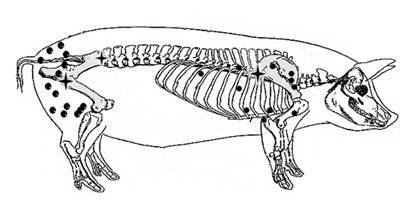Friday, March 24, 2006
9825
The Pig as a Perforator Flap Model
Purpose. Perforator flaps are a popular tool for plastic surgeons because of decreased donor site morbidity. New surgical techniques and innovations are being developed to further exploit this flap. The purpose of this study is to map out skin perforators on the pig that can be used by researchers and clinicians as a reliable, predictable model.
Methods and Materials. Three female Yorkshire pigs (30kg) had Doppler examinations for perforator arteries. When a perforator was located, the site was marked. After the animals were euthanized, the skin was dissected along the subdermal plane identifying all perforator vessels found. The subdermal location of these perforators was then transposed to the skin and marked. The perforating arteries were mapped out in distance and direction using the tip of the scapula, anterior iliac spine, and greater trochanter as anatomical landmarks.
Results. Perforators identified using a Doppler were 1-2mm in diameter. The figure below shows the relative position of identified perforators (black dot) for a pig with a 100cm snout to anus length.

Conclusion. The pig has several constant arterial perforators that can be easily and then exactly located with a Doppler making the pig a suitable animal for perforator research.
